I was in luck as I approached the Nature Center at Blendon Woods Metro Park in Columbus. A staff member told me that she was just about to release a walking stick into the wild, and she asked me if I’d like to watch. You’ll note that the insect above has a pincer like appendage at the end of its abdomen. She explained to me that this meant this particular insect was a male walking stick. The appendage is used to grip the female while mating. Another difference between the sexes is that the male is brown, while the female is greenish-brown. The male is also smaller than the female with the male being about 3 inches long, while the female grows up to 3.75 inches.
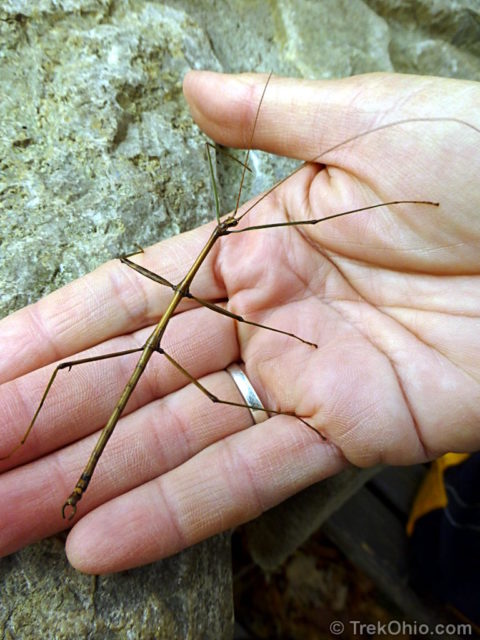
Walkingsticks can release a noxious smelling liquid when alarmed. Happily the one pictured here was not alarmed due to the gentle handling of the park naturalist.
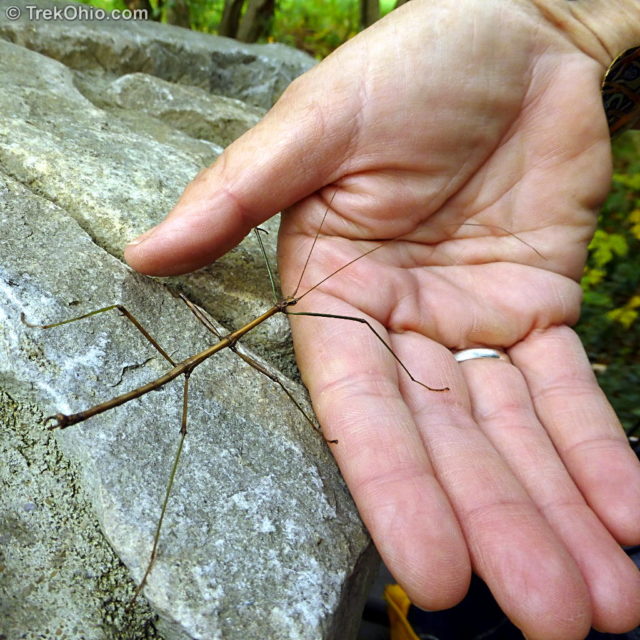
The above photo shows how long the antennae are. Supposedly each antenna is 2/3 the length of the body, but the antenna over the woman’s hand above looks like it’s even longer than the insect’s body. When the naturalist released it on the stone pillar below, the insect stood still, but gently swayed this way and that. The naturalist told me that it was pretending to be a stick that’s being pushed about by the breeze. That contradicts what I’ve seen written at a number of other web sites where the authors have said that the insect holds itself still as it attempts to pretend to be a stick. I wish I would have switched my camera to movie mode. ![]()
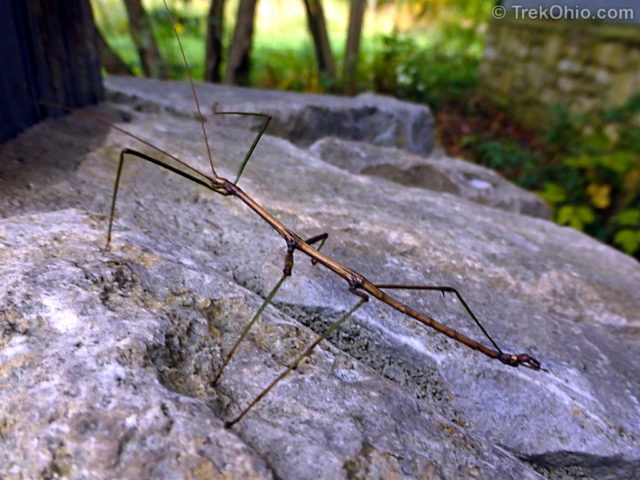
After being released the little guy proceeded to crawl up a post that was holding up the roof of the building’s porch. The naturalist thought that was perhaps not going to provide the newly released insect the best opportunity to protect himself via camouflage, so she moved him over to a shrub. I’m guessing that’s what she would have done right away if she weren’t giving me a chance to photograph him. I must say it was way harder photographing him once he was in the shrub. It was difficult to instruct my auto-focus as to what I wanted it to focus on.
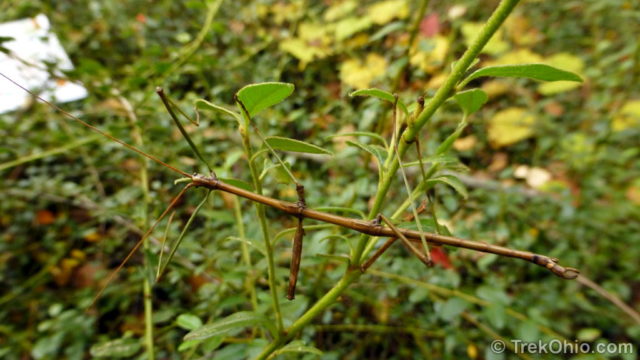
He would be even harder to see if he were amongst brown twigs, but he’s already much harder to pick out.
Walkingsticks live in deciduous forests where the eat the foliage of trees and shrubs. They are especially fond of the leaves of hazelnut and oak trees. They are nocturnal so they do most of their eating at night. Large populations can be troublesome, defoliating trees, shrubs and even crops. But fortunately since they are flightless (no wings) and move slowly, the defoliated areas are extremely localized.
The female lays eggs in the fall dropping eggs one at a time from the tree tops. The eggs fall into the leaf litter which protects them over the winter. In the spring the nymph breaks out of one end of the egg. It looks structurally similar to the adult except it’s much smaller and colored a pale green. By late summer it is mature and ready to mate.
I’ve mentioned two ways that Walkingsticks deal with predators (camouflage and foul-smelling liquid). It actually has another method of surviving a predator. If grasped by a limb, it can break the limb off and get away. It is one of the few insects that can grow the limb back.
Considering how effective the insect’s camouflage is, you’d have to be a pretty sharp-eyed predator to notice a Walkingstick. The following animals are among the predators that feed on Walkingsticks:
- Common Grackle
- Eastern Gray Squirrel
- Eastern Chipmunk
- Five-lined Skink
- American Robin
- American Crow
- Carolina Chickadee
- Blue Jay
- White-breasted Nuthatch
- Wild Turkey
And with that, I couldn’t resist publishing a mini-gallery of some of the predators. ![]()
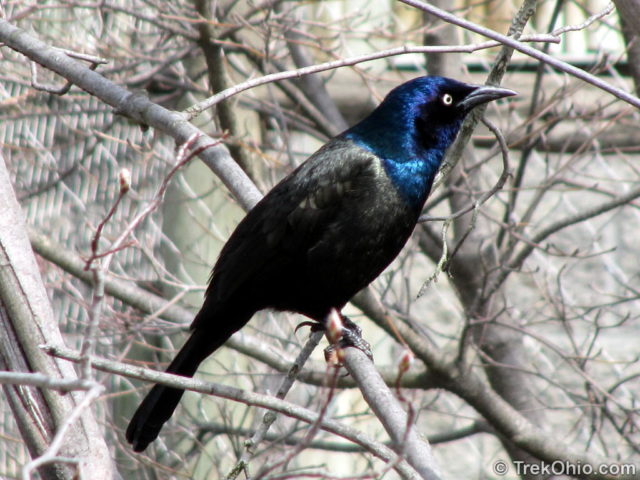
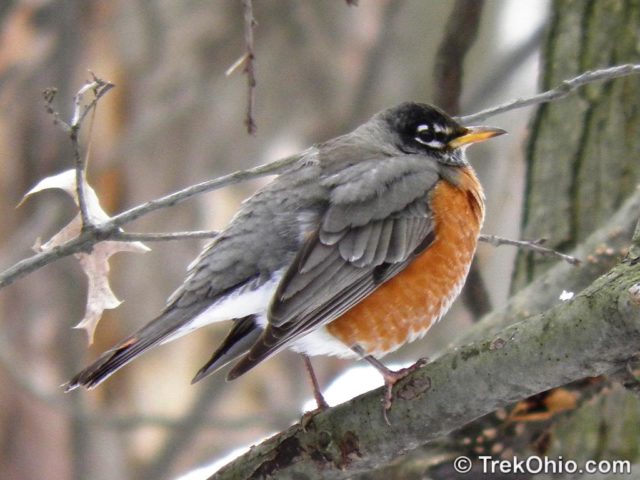
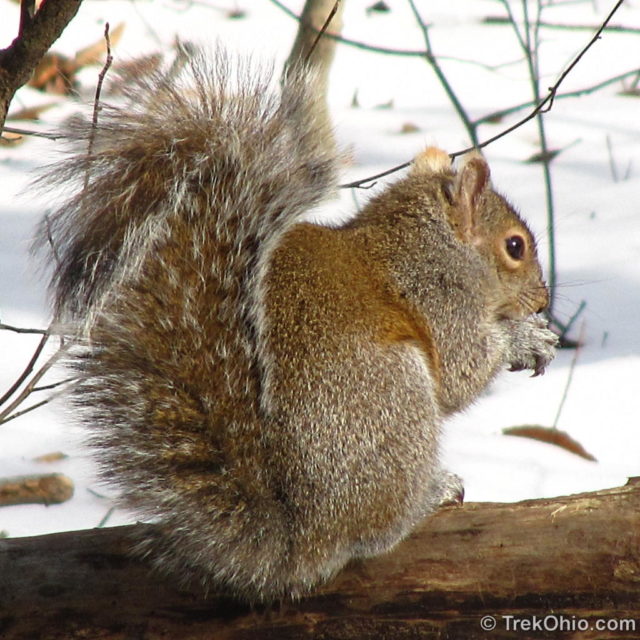
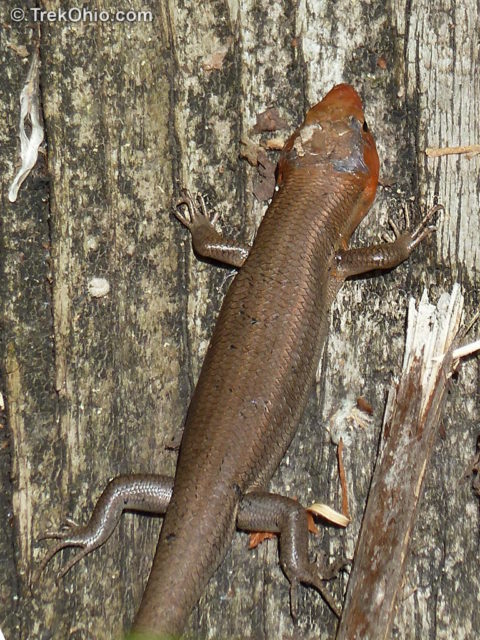
According to Jon Fouskaris of PetBugs.com, the Walkingstick is one of the bugs that you are allowed to legally collect and keep as pets in a terrarium. Feeding them is as easy as collecting leaves. They can live up to a year, but it is hard to keep them going through winter due to the lack of deciduous leaves then.
Additional information
- Walkingstick, published by the Ohio History Channel
- Species Diapheromera femorata – Northern Walkingstick, published by BugGuide.net, a great site which I review here.
- Stick Insect, published by National Geographic
- Northern Walkingstick, published by Fairfax County Public Schools
- Northern Walking Stick, published by Jon Fouskaris at PetBugs.com
- Common Walkingstick, published by Wikipedia.
More on Bugs
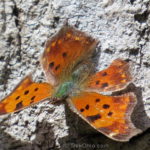
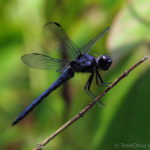
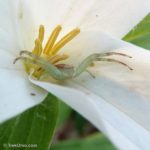
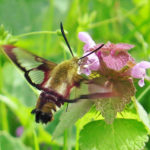
Excuse me if you receive two posts. I lost the first. We live in south central ohio and we see a lot of walking sticks every year. They always put a smile on my face each year. I always first see them on our window screens where they blend in quite well. I usually have to save them off our patio from our cat or run over over by our dog as the walking sticks cross onto somewhere else. They are very gentle and don’t seem to mind being moved. This year we saw one that looked different and acted different. It was a light greenish color and seemed to be as interested in me as I was in it. It raised it’s head high looking at me and lowered itself to walk toward me. Then repeat. It would follow me if I moved. I have never experienced that with any of other walking sticks. It didn’t seem to be confrontational. Again we had to save it from the pets that thought we were their for them. lol. I was wondering if there was any study done on their behavior.?
Cindy, what an interesting encounter! I couldn’t find any information on this insect species pursuing an object (your hand in this case). However I did a little more research on its general behavior. According to the Wikipedia article on Phasmatodea (the insect family to which they belong), there is some controversy about what their rocking behavior means. Originally scientists thought that the insects rocked to mimic the action of wind blowing through the twigs. However, some scientists now think that the rocking is vital to its visual system. By moving back and forth while looking at something, it might be trying to visually distinguish an object in the foreground from the background imagery. In your case, it could have been trying to figure out what your hand was by changing its visual angle with respect to your hand by moving towards it. But that’s just a guess. It would have been fun to watch it follow your hand.
Wow. I have never seen walking sticks, with the exception of my wife’s “walking sticks”, when she walks Nordic walking with them. 🙂
Thank You for this very interesting post full with great photos.
Your welcome, Sartenada. I thought I needed to include the word “insect” in the title of my article, or people would think it was about the kind of walking sticks that your wife uses. 🙂
5 lined skinks definitely get big enough to eat walkingsticks. They grow to 8.5 inches long, and I’ve seen some that looked bigger than that.. I used to have a lot of them in my yard but my cats murdered every lizard.
Whoa! I didn’t know that five-lined skinks became so large. It sounds like your cats are quite the hunters.
The size the that walkingstick is amazing. Love the color in the Common Grackle.
I thought that the walking stick looked really big, and I loved having the hand in the photo for scale. BUT since this is the male, it’s the little one. 😯
I also got photos of this common grackle doing mating displays. It was interesting watching him.
Great post! We had a couple of pairs just a few weeks ago here at Wahkeena. I’ve collected the eggs and am hoping for a whole mess of tiny baby walkingsticks next spring!
That would be awesome! I hope they hatch. I so wish I would have made a video of the insect doing his “swaying in the breeze” trick.
I realize that Wahkeena Nature Preserve is about to close for the winter, but when I was looking over the preserve’s calendar, I saw something about an off-trail, winter hike. Is that still happening?
Nice pics! That is one of the biggest reason why people like hiking as during hiking we get a chance to see new species many times we find some beautiful creatures.
Thank you, Peter. I also like to come across such interesting creatures. And when I don’t see one, there is always interesting plant life.
Very cool! Now I will keep an eye out for them. Love all your photos!
Thank you, Amy. Good luck trying to spot a walkingstick. I bet that I walk right by them without seeing them.
Great pictures! I love walking sticks but seldom see them. I’ll have to pay more attention!
Thank you, Deb. If the staff person at Blendon Woods hadn’t brought the walkingstick to my attention, I probably would never have noticed it.
I’ve seen them swaying back and forth…it’s pretty cool!
I’m glad that you got to see it, too, Karen. Did you spot yours in the wild? I’ve probably walked past loads of them without knowing they were there.
Yes, I did! Totally a lucky sight as it was munching on a cherry tree and I was looking for caterpillars and found that the culprit was a walking stick instead.
Too bad for the cherry tree, but interesting!